2016 Year in Review -- the World Coins version
 jgenn
Posts: 776 ✭✭✭✭✭
jgenn
Posts: 776 ✭✭✭✭✭
I participated in the 2016 Year in Review thread that @brg5658 started in the US Coins forum ATS. Of course, nearly all my coins were not minted in America so I thought I would start a similar thread here. This was a big year for me, because I knew that it would be my last year with a full-time paycheck, so I went a little overboard on closing out my collecting goals.
January is always a big month for world coins. I kept my powder dry for some of the 8 reales I needed for my Charles III pillar dollar set. Here's the most scarce one of four that I acquired from the Rudman Collection of Mexican Coins, Part II. 
I had been looking for a wildman thaler for some time and passed on many of those "flabby guy in a hula skirt" issues that are so common. Stephen Album had a very cool "Brillenthaler" that I scooped up in January. These are named after one of the symbolic items depicted in the design -- the spectacles.
My one US coin for the year was this Mumey Pony Express Centennial medal, HK-584, also from January.
I completed my goal of a Charles III portrait 8 reales from each of the mints with this rare issue from Chile from World Numismatics (aka Mexican Coin Company) in January.
I closed out January with a Yuzluk of the Ottoman Empire AH1203 year 6 of the reign of Selim III (1794).
Mid-year acquisitions included this Tallero from the Republic of Ragusa (Dubrovnik) from the April CIFC.
And this "klippe" type transitional 8 reales from the April Soler y Llach subastas in Barcelona.
Followed by this top pop super toner 960 Reis from the Rio de Janeiro mint, overstruck on a Potosi 8 reales from the August ANA.
I closed out the year with this Zurich thaler (circa 1560) , known as a "Stampfer thaler" for the designer and mintmaster, Hans Jakob Stampfer from the September Long Beach auction.
And this Peter the Great rouble, also from the Long Beach auction.
As well as this roller press struck 8 reales from the Segovia mint from the Long Beach auction.
This ecu from the Saint Palais mint in Navarre came from the October cgb.fr auction in Paris.
This Brunswick-Luneburg thaler came from the October Gorny und Mosch auction in Munich.
A Frankfurt dopplethaler from the WAG Online auction in October.
The very last acquisition of the year was this 1808 dated, but likely 1811 minted, 8 reales from Potosi.
Post your 2016 world coin acqusitions, too!
Comments
Jack - excellent year for you. Congrats. The Stampfer thaler and Wildman really stand out!
Busy year involving pruning and adding to the collection. Here are a few of mine - top two choices for me are the 1486 Guldiner (First Taler) and Agathocles Tetradrachm.
After viewing the images in this thread I feel totally...hmmm, insignificant, insectlike, wormish, unworthy.
Not being sarcastic either, nor do I mean to make light of the coins (works of art- the reverse of the wildman thaler, 1st image of the two, leaves me gobsmacked) the two of you have posted; I just feel like I will never be able to achieve that level of acquisition.
is that you end up being governed by inferiors. – Plato
This is about sharing a cherished hobby.
Don't let that stop you from posting your favorite acquisitions from this year.
I bought a lot of "stuff" this year, but these are two of my favourite darkside purchases from 2016:


My YouTube Channel
Also this I like:


My YouTube Channel
Some of the fun I had in 2016

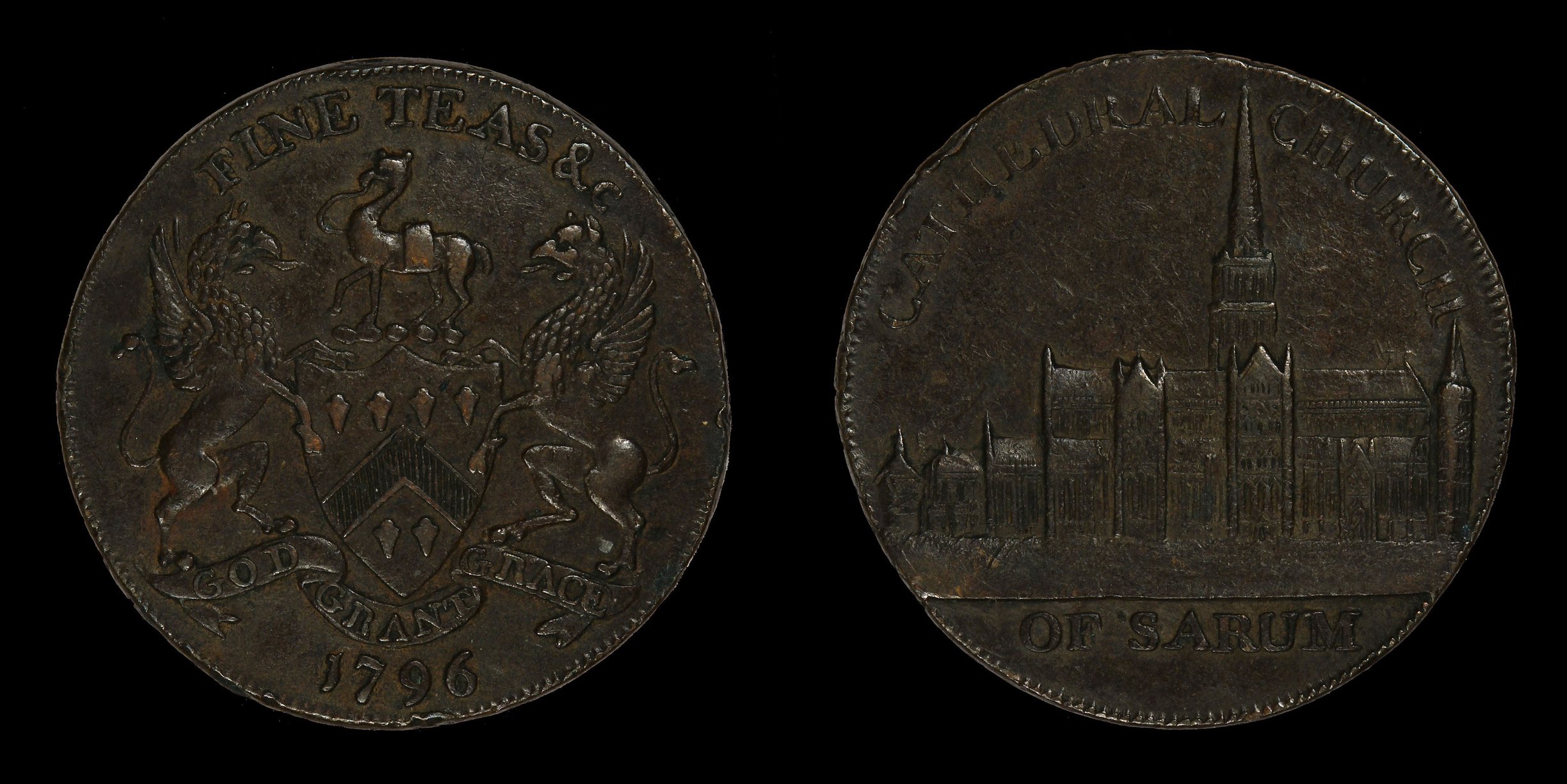




"Inspiration exists, but it has to find you working" Pablo Picasso
Wonderful examples, everyone.
This has been so far a very eventful year so far, a mix of the most wonderful moments and some very unpleasant ones. Numismatically speaking, only a few coins added to the collection.
And can't forget a wonderful numismatic wedding surprise from John and Dan!
I am an ancients collector but I have added some world coins because I am pursuing a historical figures collection. Here are a few historical figures I added recently.
Napoleon I

Napoleon III
Catherine II
Justinian
Theophilus
@jgenn, SUPERB coins! I'll repost my remarks from the thread I started in the ATS US Coins forum.
I know we are only in December, but I have no numismatic purchases on my radar for the remainder of the year, and I'm also in the process of putting together a submission to NGC in the next week or so. Thus, I don't expect to make any more purchases this calendar year. That being said, I wanted to start a thread where people can share their favorite purchases for 2016. Mine are below.
In the year 2016 I purchased fewer numismatic items than any year in the past decade or so. My goal was to focus on fewer, but more unique items. It was a planned attempt to curb what I was starting to feel was a trajectory of "hoarding". My interests are still quite broad, and I don't ascribe to any one series, country, or other numismatic niche. Thus, my purchases may seem disjoint, but I hope the common thread of "quality" and eye appeal are evident.
Happy holidays to all!
-Brandon
January 2016
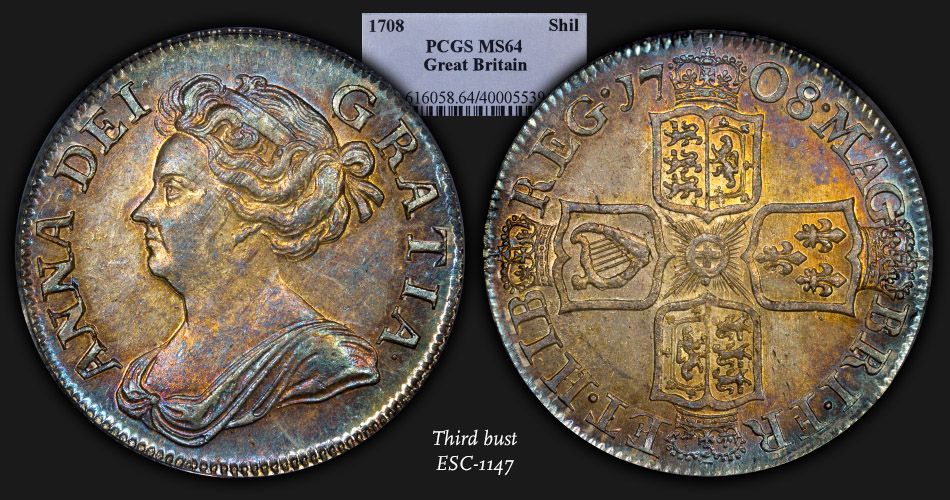
February 2016
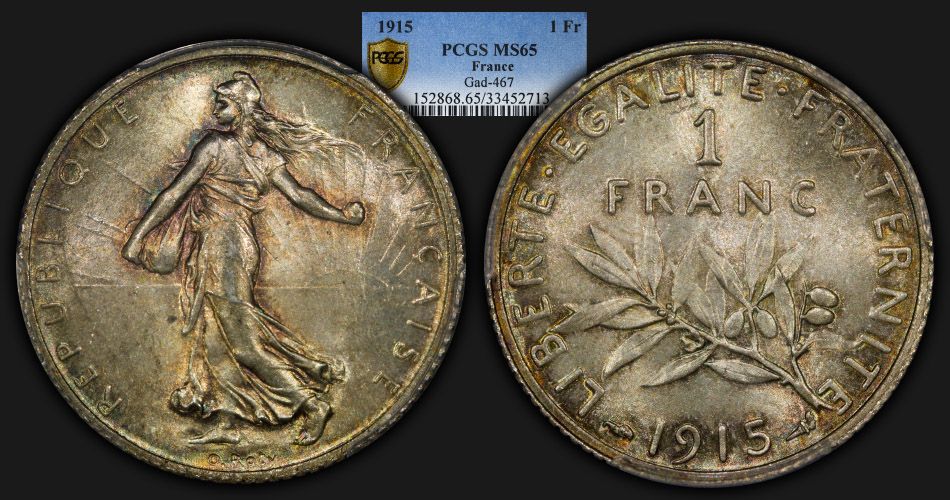
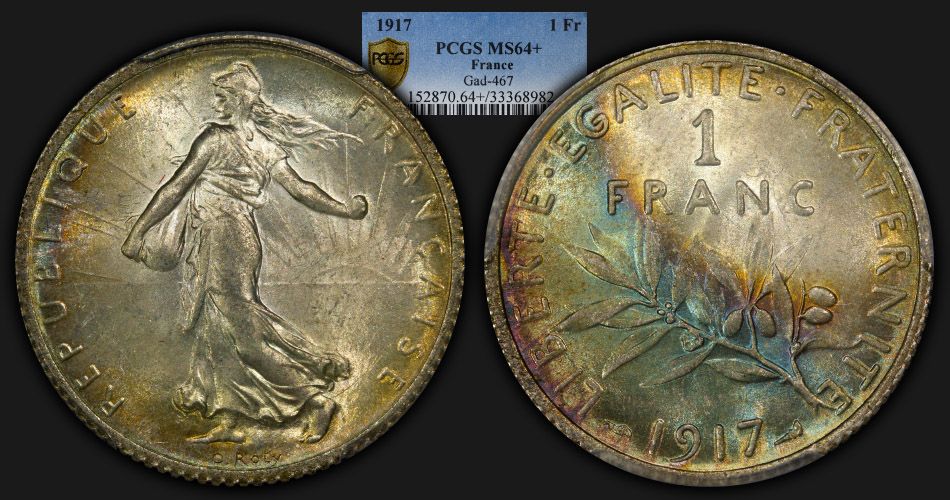
April 2016
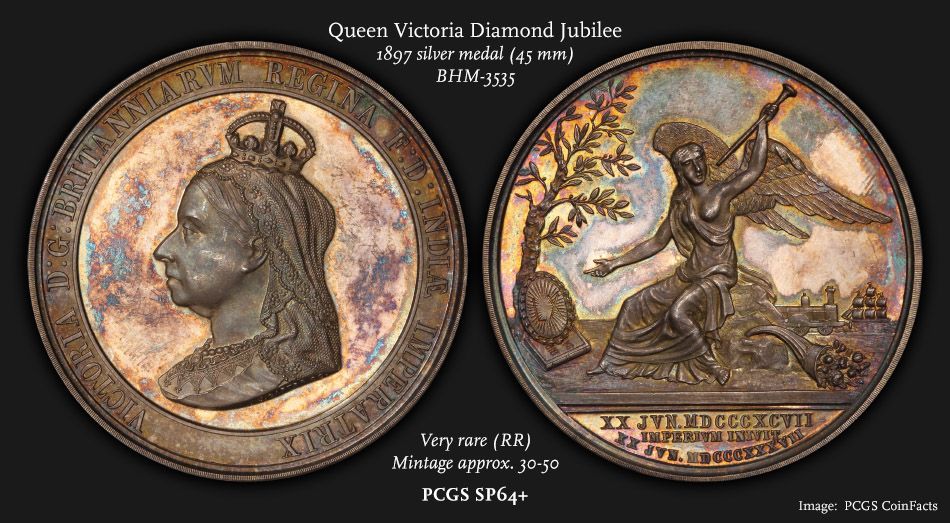
May 2016
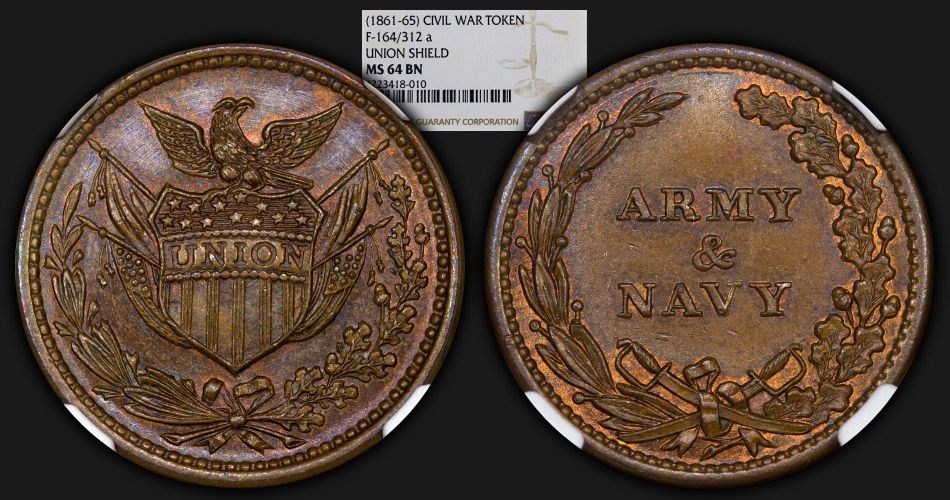
July 2016
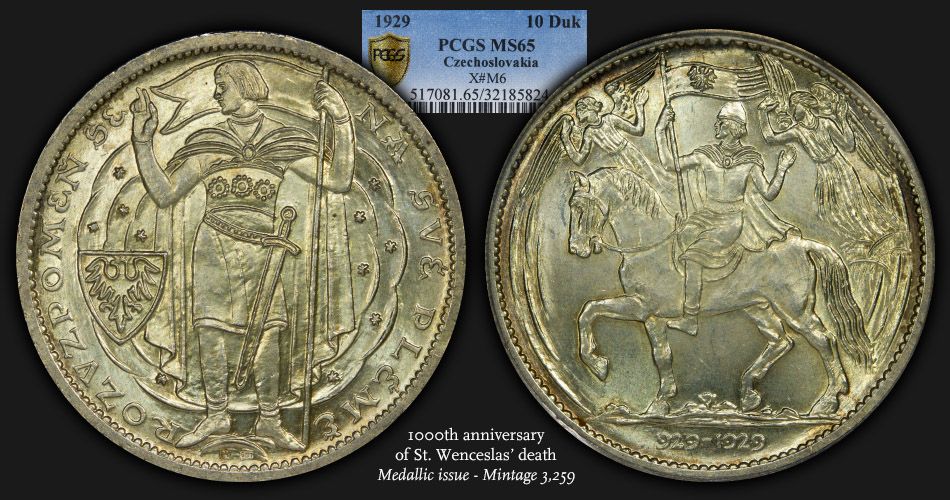
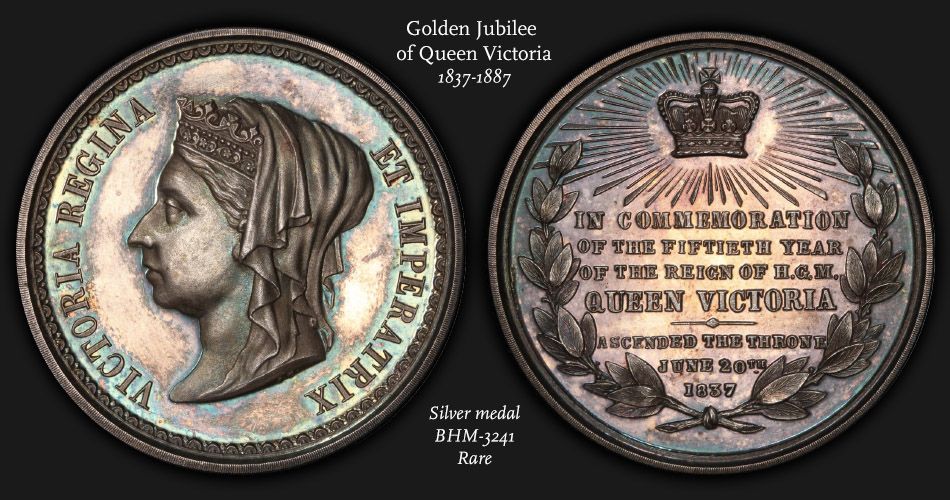
August 2016

September 2016
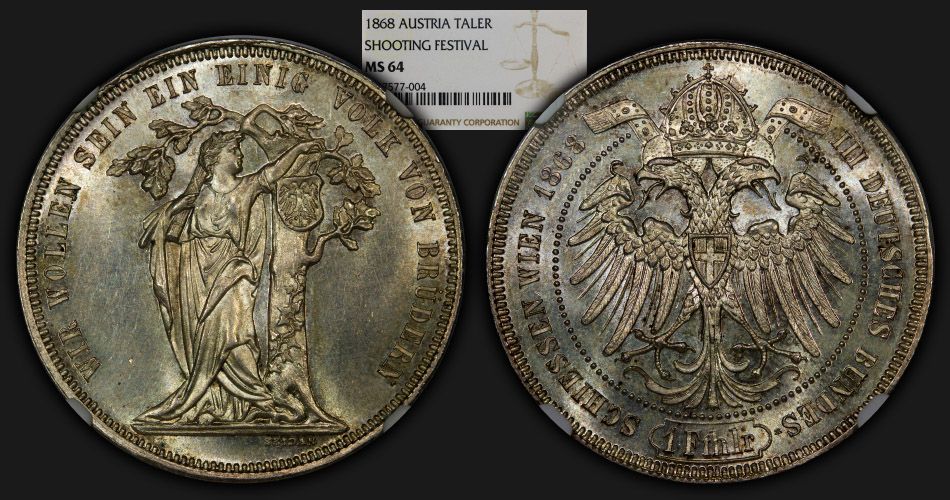
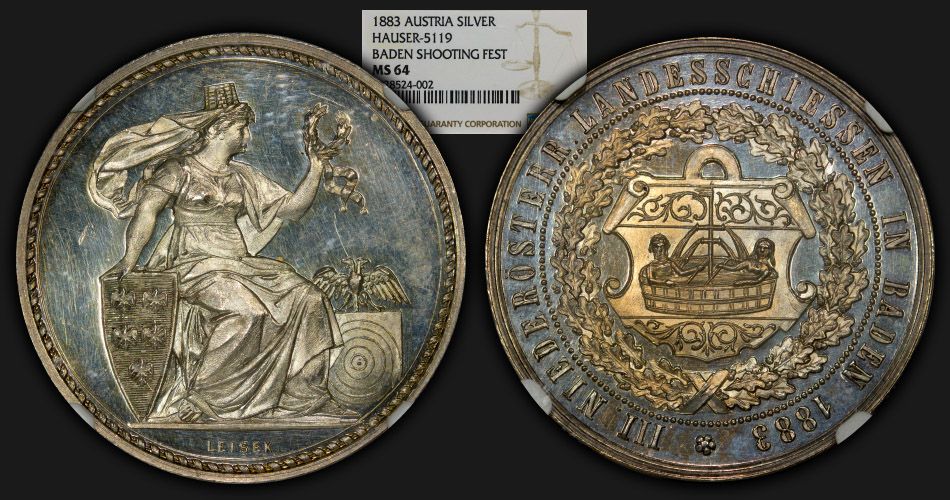
November 2016

-~-~-~-~-~-~-~-~-~-~-~-~-~-~-~-~-~-~-~-~-~-~-~-~-~-~-~-~-~-~-~-~-~-~-~-~-~-~-~-~-~-~-~-~-~-~-~-~-~-~-~-~-
My sets: [280+ horse coins] :: [France Sowers] :: [Colorful world copper] :: [Beautiful world coins]
-~-~-~-~-~-~-~-~-~-~-~-~-~-~-~-~-~-~-~-~-~-~-~-~-~-~-~-~-~-~-~-~-~-~-~-~-~-~-~-~-~-~-~-~-~-~-~-~-~-~-~-~-
Great stuff!
My YouTube Channel
Some beautiful pieces!
All really, really nice. Those Sowers are beauties and that Czech piece is super attractive.
Jeff
I bought a few at the beginning of the year, but really nothing since June. Life has gotten in the way and I just have not been able to devote the time to coins, hopefully back at it sometime next year.
1740 Stolberg 2/3 Taler in 62

1313 France (Namur) Baudekin, haven't gotten around to sending this in yet but I think it will go mid mint state:

1544 Brandenburg Franconia Taler in 63:

1595 Saxony Taler in 63:

I also added a few decent ancients this year but the pieces above are the ones I really thought were special.
World Collection
British Collection
German States Collection
Go Jeff! Miss seeing your posts and your lively interests! Hope all is well and sending Best from me and my son!
Well, just Love coins, period.
Awesome pick-ups all around. Zohar -- the design on that Vienna Siege Taler is so cool. That could've come straight out of a space fantasy movie.
Two of my favorites from 2016:
Impressively double-struck "ceremonial" miliaresion of Heraclius. Even came with some dirt.

1885 Hong Kong 10 cent.

I was able to stay true to the theme for the most part with German States sede vacante material and a couple of Papal States piastras. I hope to get some of my raw pieces graded in 2017 for consistency.
Munster - 1761 - Sede Vacante taler

Wurzburg - 1754 - Sede Vacante medal

Wurzburg - 1795 - Sede Vacante medal

Speyer - 1770 - Bishopric issue 1/2 taler

Munster 1719 - Sede Vacante medal

Brixen - 1791 - Sede Vacante medal

Brixen - 1779 - Sede Vacante medal

Friesing - 1788 - Sede Vacante medal

Papal States - 1675 - Piastra

Papal States - 1684 - Piastra

Wow, gorgeous pieces in this thread!
I stuck pretty closely to my three major collecting interests this year - British historical medals, Conder tokens and large architectural Papal medals. Here's a representative of each.
1805, Death of Admiral Nelson, BHM 577. PCGS SP65
1799, Ayrshire 5 in silver, NGC PF66Cam (Fullarton pattern 1/2 penny)
1869, Pius IX, interior of St. Peter's basilica, 82mm, 270 gms
Conder Token Gallery https://photos.google.com/share/AF1QipMCiunai6NjOxoo3zREkCsAnNm4vONzieO3u7tHyhm8peZmRD_A0MXmnWT2dzJ-nw?key=Rlo2YklUSWtEY1NWc3BfVm90ZEUwU25jLUZueG9n
2016 - My 10 coin year in review
As the year draws to a close, it's nice to reflect on the acquisitions I've been fortunate enough to pick up. These are all British Anglo-Saxon:
Anglo-Saxon primary phase sceat, ca. early 8th century
Unusual type with a stepped cross design that degenerated and on this coin looks more like a sunburst. The "porcupine" design is found on Series E sceattas, which are Frisian in origin, though several British designs copy this, as would be expected given the trade between these societies.
Anglo-Saxon secondary phase sceat, ca. early 8th century
This "Woden" head coin comes in multiples styles, with anywhere from 5-12 annulets around the face. While the face is purported to be a representation of Woden, or Odin, there is no particular reason it must be.
The type was manufactured in Hamwic, a port city thought to be modern day Southampton. This area was developed during the time of Ine of Wessex, and that ruler may have made it his seat; not surprisingly coinage took place there. Hamwic was the first Channel port of the expanding kingdom of Wessex, and provided a site for trade with the Franks and Frisians. This particular coin is probably from the period of 720-740.
Surprisingly, while there was certainly continental trade through Hamwic, this coin type has not been found in any great number outside of the Hamwic area. Perhaps this was an internal coinage for the merchants of England, and other coins such as the series E "porcupine" sceat were for international trading.
Sceatta of uncertain origin, approximately 730-760 (London)
This unusual sceatta has mostly been found in East Anglia, suggesting its manufacture was in that region. The inscription is probably meant to read "LVNDONIA" and is possibly copied from other coins that read "DE LVNDONIA". The moneyer was likely illiterate as the majority of these coins appear blundered.
The figure on the back, holding the two crosses, and standing on what appears to be a (very small) boat, may be a missionary teaching Christianity to other peoples somewhere across the North Sea or English Channel. The reverse appears on other sceats, such as coins of series K.
Anglo-Saxon Series Z sceatta
This unusual sceatta was probably produced in Kent or East Anglia, and the bearded face is probably Christ. The reverse is a skinny quadriped, with a curled tail circling through its legs.
The origin of this design seems to have heavy Roman and Byzantine influences. The obverse bust parallels similar images of Christ found on contemporary Byzantine coins and Christian tokens that pilgrims would have brought back from the Holy Land. The face has a fairly haunted appearance, and is expressionless.
The reverse is a little more tricky. Anna Gannon (Coins, Images, and Tales from the Holy Land, in Studies in Early Medieval Coinage vol 2) suggests that it represents a stag, which would have had a religious meaning. In my opinion, however, even with the primitive art of the time, it's hard to call that a stag, as the small linear "horns" really look more like ears. Other scholars call the creature a hound or wolf, with origins in Celtic imagery (such as the "Norfolk wolf", which is also of East Anglian origin). Alternatively it has been suggested (Charles Wood, private correspondence) that the creature might be a crude copy of the Roman wolf, nursing Romulus and Remus, as appears on many earlier Roman coins. This imagery occurs on a later East Anglian coin, that of Aethelberht II. The East Anglian ruling dynasty in the 7th century was the Wuffingas, a name that probably means "kin of wolves", and the wolf may have been a representation of the dynasty.
This coin probably dates from the early 8th century. The legends are illegible, and could be erroneous copies of Greek, of which the Anglo-Saxons would have presumably known little.
Sceat of Aldfrith, king of Northumbria 685-705
Aldfrith was the first king of Northumbria to issue coins in his name. His coins depict an animal of crude style, probably is supposed to be a dragon. It is different than the animals on mid 8th century Northumbrian coins of Eadberht, Alchred, Aethelred I, and Aelfwald.
Due to this difference, for a while the coins were attributed to a king of Lindsey of the same name, who flourished in the late 8th century. However the archaeologic evidence, coin composition, and distribution of metal detecting finds argues against this idea. Most experts consider this coin struck for Northumbria's Aldfrith.
Sceat of Aethelwald Moll, king of Northumbria 759-765 with Ecgberht, Archbishop of York
Aethelwald, also called Moll, was a nobleman who ascended the throne after the murder of King Oswulf, which he may have orchestrated. He was deposed after some years, and went to a monastery. His son Aethelred I would later become king in Northumbria.
Despite a rule of 6 years, coins in Aethelwald's name are excessively rare. Until quite recently, this coin was the only one known. It depicts the name of Aethelwald, with the archbishop's name on the reverse. Due to the odd spelling of Aethelwald's name, there has been some controversy as to whether the name is supposed to be a variant of Alchred, Aethelwald's successor who also struck coins with Archbishop Ecgberht. Most experts (including Abramson, Booth, Lyon, and Stewart) now accept this as belonging to the former monarch.
There are 5 coins of Aethelwald Moll known. Two others, like this one, were struck with Archbishop Ecgberht. The other two are inscribed with Aethelwald and his son Aethelred. The ancient chip makes the coin easily identifiable.
This particular coin carries a long provenance, and has been depicted in multiple publications on Northumbrian coins, dating back to the 1840s. It is pictured in Numismatic Chronicle Vol. 3 (1841), Numismatic Chronicle Vol. 9 (1869), Sceattas in England and the Continent (1984), and Numismatic Chronicle Vol. 151 (1991).
Sceat of Aelfwald I, king of Northumbria 779-788
Aelfwald I was a little-known king of Northumbria during the turbulent late 8th century. He was descended directly from Eadberht, and probably had a greater claim to the throne than his predecessor, Aethelred I. Aethelred, of the house of Moll, he (or perhaps his regent) was recorded as being harsh, and was deposed in 779; he was probably a child during his first reign and was exiled rather than put to death. Aelfwald was king for nearly a decade, though nearly nothing is known about him. He met his end through assassination, as did many of the rulers of his time. His sons were later put to death by Aethelred after his restoration.
Despite a relatively long reign, coins of Aelfwald are quite rare, they seem to be more so than Alchred, though slightly less rare than the animal type of Aethelred's first reign. His name is spelled in various ways on his coins, sometimes with a few runic letters (but not all in runic). They can be found with the beast facing left or right.
Sceat of Aelfwald II, king of Northumbria 806-808, moneyer Cutheard
This rare coin, in the name of "Aelfwald" (with the A runic) most likely belongs to the short and poorly documented reign of Aelfwald II, who gets a short passage in Roger of Wendover's "Flores Historiarum" and a few other semi-contemporary pieces. He succeeded Eardwulf, and only reigned 2 years. Eardwulf may have had a second reign following this, or the throne may have passed to Eardwulf's son Eanred.
There has been some debate as to whether this rare issue belongs to the first (779-788) or second king (806-808) named Aelfwald. The most conclusive evidence seems to be the style of the name of the moneyer Cutheard. Cutheard coined for Aethelred I, Eardwulf, and Eanred. On coins of Aethelred, his name is spelled "CVDHEARD", on Eardwulf it is spelled "CVDHEARD" or "CVDhEART", and on Eanred it is spelled "CVDHARD". On all coins of Aelfwald, the name is spelled "CVDhEART". This supports that the coins are more likely to be semi-contemporary to coins of Eardwulf, during whose reign the spelling seems to have changed. This fits better with an assignment to the second Aelfwald. For more info, see Blackburn & Gillis, "A second coin of Eardwulf and the attribution of the moneyer coins of King Aelfwald" in BNJ 67.
Coins of Aelfwald II are very rare, with 11 documented on the Early Medieval Corpus, and a handful of others which have not been listed, such as this one. Besides Cutheard, there are 2 coins of Aelfwald II known by the moneyer Cuthgils, who also coined for Aethelred I.
Styca of Eanred, king of Northumbria 810-841, moneyer Aethelheah
Eanred was one of the longest reigning kings in Northumbria, and though little is known of him, his reign seemed to be one of relative stability.
Aethelheah, considered the normalized name of "Edilech", was an early moneyer for Eanred. His career seems to have been quite short, as his coins are the rarest of all moneyers in the styca series. This coin was one of the last ones I needed to complete the set of all moneyers.
Styca of Redwulf, king of Northumbria 844, moneyer Coenred
Redwulf was a Northumbrian usurper during the turbulent period of Viking raids. He held power for less than a year, so his coins are fairly rare, but they were struck by at least 10 different moneyers. Redwulf led his army against the Vikings and was killed in battle, an unusual thing for these despots, who typically met their ends by assassination.
Coenred was an episcopal moneyer who struck coins for Wigmund, archbishop of York, as well as for Kings Aethelred II and Redwulf.
And a non-coin item:

Soapstone mold for casting Ban Liang coins from ancient China, Han Dynasty, ca. 2nd century BC.
My Series H, Type 49 (SCBC 801A) came with a CNG tag that had the period a bit earlier. Too early, in my opinion. I had a private exchange with a specialist, and he agreed with me: King Ine, circa 720-740. I think this because Ine (ruled 688-726) wouldn't have made Hamwic his seat of government immediately in his reign. He would have needed time to build that place up from a simple fishing and trading village to one worthy of hosting his royal mint. Of course, it is also possible that the sceatta was minted under Ine's son Æthelheard.
Regarding the obverse head, the official literature from the BNS no longer refers to that as being of Odin. Whom it represents, no one knows. Maybe it is of Ine?
EVP
How does one get a hater to stop hating?
I can be reached at evillageprowler@gmail.com
My 2016 Year in Review:
When I first read this thread, I thought that my post would be quite sad. In a personal way, it was (but that is not a topic for this place). Upon further assessment of my numismatic purchases, I found that I did quite well this year.
My biggest achievements this year was, of course, in the Anglo-Saxon series. I acquired a few sceattas, but they were no big deal and frankly the images I have of them are less worthy than the hum-drum coins themselves.
But the pennies are noteworthy (some despite their images). I collect House of Wessex, from Ecgberht (King of Wessex) to Harold II (King of England). My pursuit really is to have one of each monarch, and some of the more interesting varieties. It is along this narrow pursuit that I made great progress.
ANGLO-SAXON, Kings of All England. Cnut.
1016-1035. AR Penny (17mm, 1.06g, 9h). Jewel Cross type (BMC xx, Hild. K). Lundene (London) mint; Cinewold, moneyer. Struck 1036-37. + CNVT: RECX A:, diademed bust left / + CINEP.OL’D ON LVND, cross composed of four ovals united at base by two concentric circles. SCBI –; North 797; SCBC 1160. Near EF, light golden toned. Very rare, especially with this moneyer.
Ex CNG inventory, #422270.
Ex Lloyd Bennett inventory, item HC4380-5141.
Posthumous issue struck under Harthacnut by the widow Queen Emma of Normandy (aka, Ælfgifu).
ANGLO-SAXON, Kings of All England. Harold I Harefoot.
1035-1040. AR Penny (17mm, 1.14g, 3h). Jewel Cross type. Struck 1036-1038. Thetford mint; Æthelmær, moneyer. + HΛRO LD RE•X•; diademed and draped bust left / + EGLNER ON DEODF; cross composed of four ovals united at base by two concentric circles enclosing a pellet. North 802; SCBC 1163. Superb EF; as struck. Well struck and lustrous, with attractive light vibrant golden toning. Some stain spots on the reverse.
Ex Joe Linzalone inventory.
Harold's nickname "Harefoot" is believed to refer to his speed, and the skill of his huntsmanship.
ANGLO-SAXON, Kings of All England. Harthacnut.
1035-42. AR Penny (17mm, 1.12g, 6h). Arm and Scepter type, in the name of Cnut (BMC xvii, Hild. I). Theodford (Thetford) mint; Eadric, moneyer. Struck 1040-1042. Diademed bust left, holding trefoil-tipped scepter / + EDRIC ON ÐEOTVOR, quadrilateral, with pellet in center and angles, over voided short cross. SCBI 15 (Copenhagen), 3816-7 (same dies); North 799; SCBC 1169. Choice EF. A superb portrait piece; toned. Rare.
Ex CNG inventory, #420797.
The above three pennies complete the major types of the Anglo-Danish rulers of England: Cnut, Harold I (whose mother was Anglo-Saxon) and Harthacnut (whose mother was the Norman Queen Emma). To avoid a civil war between the two sons' factions after Cnut's death, a witenagemot decided on a division of the Kingdom. It also helped that Harthacnut had to return to Denmark to secure his rights in Scandanavia, and Harold died by the time Harthacnut was able to return to England.
ANGLO-SAXON, Kings of All England. Edward the Confessor.
1042-1066. AR Penny (18mm, 1.09g, 6h). Trefoil Quadrilateral type (BMC iii; Hild. C). Colenceaster (Colchester) mint; Stanmær, moneyer. Struck 1046-1048. + EDPE: ·RD REX:, diademed and draped bust left; trefoil-tipped scepter before / + STΛMÆR ON COL·Λ:, quadrilateral, with pellet in center and trefoils at angles, over voided short cross. Freeman 73; SCBI –; Hild –; BMC –; North 817; SCBC 1174. Near EF, attractively toned. Very rare type for this mint, especially this moneyer.
Ex CNG inventory, #415994.
Ex G. V. Doubleday collection (Glendining, 6 Oct. 1987) lot 101.
The Doubleday collection had heavy representation of Colchester mint pieces, because the collector was from there.
Despite my financial woes this year, I was able to acquire pieces not Anglo-Saxon. I got two German States coins that really made me happy:
GERMANY, Braunschweig-Wolfenbüttel. Heinrich Julius.
1589-1613. AR Wespentaler (41mm, c. 29g, 2h). Osterode mint. Dated (15)99. Heraldic eagle in flight facing, above crowned lion couchant left, flanked by wasps flying towards center, sun at left; wreath around / HENRICUS · JULIUS · D · G · P · E · HA · D · B · E · L * 99 · P · P · C; nine laureate arms forming ring around three central arms. Welter 630; Davenport 9093. EF, toned and very lustrous. Rare so nice.
Ex Zohar collection.
Ex Coin Kingdom, LLC, inventory.
According to state archives in Wolfenbüttel, the “wasps” were probably mosquitos (a metaphor for the nobles whom he viewed as annoyances). In 1589, Heinrich Julius replaced Saxon Law by Roman Law, thus reducing the rights of the nobles. As a result of the conflict with the nobles, he issued several politically themed talers: Rebel, Lying, Truth, Wasp, Pelican, and Harmony. Heinrich Julius was Duke of Brunswick-Lüneburg as well as Prince of Wolfenbüttel.
GERMANY, Schlesien (Breslau).
AR 3 Taler Klippe (c. 12g). Siege issue. Glogau mint. Hans Riedels, mintmaster. Dated 1621. + MONETA • ARGENTEA • SILESIÆ • III • TALERO •; eagle facing, head left, with wings displayed, cross on breast; 16 21 flanking tail feathers; all within circular border; 4/M stamp above; monogram stamp below. KM 24 (Austria KM 358). Choice EF, toned. Rare. Struck with 3/4 Taler dies.
Ex HA Make Offer to Owner inventory.
Ex HA 2008 May Long Beach, lot 52585.
Johann Georg von Jägerndorf, the Protestant ruler of Silesia, sent troops to Bohemia to assist Frederick V of the Palatinate in his fight against Holy Roman Emperor Ferdinand II. As a result of his actions in support of the Protestants, Johann Georg lost his territory in 1621. At the end, Frederick unsuccessfully tried to organize a last stand at Breslau and retreated. Silesia was forced to make peace with the Holy Roman Empire and issued emergency coins to help pay its debts.
[The matter of under which country to place a coin can be tricky at times. In this case, I am glad that Krause revised their classification; clearly the coin was slabbed prior to the re-classification. If you research the history of this coin and of the territory, I think you'll agree its current assignment under Germany is arguably correct.]
Italian States:
ITALY, Sicilia (Regno). Ferdinando III di Borbone.
1759-1816. AR Oncia da 30 Tarí (57mm, 68.58g, 6h). Palermo mint. Gabriel Lancilotto Castello, mint master. Dated 1791. FERDINANDVS • D • G • SICIL • ET • HIER • REX, armored bust right / EX AVRO ARGENTEA RE SVRGIT • 1791 •, phoenix rising facing from flames, head left, wings spread; personification of sun above; G·L·C·I across field. Davenport 1420; MIR 597; KM (C) 37a. EF, toned. Rare.
Ex Matteo Cavedoni (MCN) inventory.
Ferdinando was also Ferdinando IV of Naples. The Kingdom of Sicily merged with Naples in 1816 to become the Kingdom of the Two Sicilies. Ferdinando became Ferdinando I of the new kingdom.
ITALY, Sicilia (Regno). Ferdinando III di Borbone.
1759-1816. AR Oncia da 30 Tarí (47mm, 68.17g, 12h). Palermo mint. Nicola d’Ogremont Vigevi, mint master. Dated 1793. FERDINAND • D • G • SICIL • ET • HIER • REX, armored bust right / Radiant sun to upper right of phoenix rising from flames, facing right, date below, EX • AVRO • ARGENTEA • RE SVRGT •; Phoenix rising right from flames, wings spread; personification of sun to upper right; N·d·O·V across field. Davenport 1422; MIR 598/1; KM (C) 38. Near EF, lightly toned and very lustrous.
Ex Matteo Cavedoni (MCN) inventory.
Ferdinando was also Ferdinando IV of Naples. The Kingdom of Sicily merged with Naples in 1816 to become the Kingdom of the Two Sicilies. Ferdinando became Ferdinando I of the new kingdom.
ITALY, Papale (Stato pontificio). Clemente X.
1670-1676. AR Testone da 30 baiocchi (32mm, 9.64g, 12h). Dated 1675. CLEMENS * X PONT * MAX; papal arms / DEDI • CORAM • TE • OSTIVM • APERTVM; Holy Door open with pilgrims; date at bottom. Muntoni 22; Berman 2012; KM 364. Superb EF, with superb luster and light champagne patina. Very rare.
Ex Matteo Cavedoni (MCN) inventory.
Ex Nomisma S.P.A., Numismatic Auction 52 (May 2015), lot 1209.
Holy Year issue. In Judaism and Christianity, the concept of the Jubilee (Holy Year) is a special year of remission of sins and universal pardon. The reverse legend translates to “I have opened a way before thee”, which is a reference to Isaiah 40:3 (“Prepare ye the way of the Lord”).
[This is easily one of my favorite coins in my collection, and it's not a penny nor a taler/crown.]
And this not-really-a-coin British piece:
GREAT BRITAIN, House of Stuart. Charles I.
1625-1649. AR Halfpound (45mm, 59.59g, 7h). 19th century fantasy of a 1644 ‘Oxford Halfpound’. Charles on horseback left, holding reins and raised sword; in distance, view of Oxford / RELIG : PROT : LEG/ANG : LIBER : PAR between two beaded lines; three crowns and ·X· above, :1644: and OXON below. For inspiration: SCBC 2948 (Oxford Crown). Good VF, toned. Interesting.
Ex James Beach inventory.
Ex CNG eAuction 339, lot 652.
Possibly by Robert Ready and sons (The E-Sylum, Volume 13, Number 30, 2010 July 25, Article 12).
I also picked up some important reference material that I desperately needed:
Abramson (sceattas), Metcalf (thrymsas and sceattas), North (British; may he RIP), Muntoni (Papal States), Panutti-Riccio (Sicily)
How does one get a hater to stop hating?
I can be reached at evillageprowler@gmail.com
This is the auction photo, as I haven't photographed it yet. I have wanted one of these for quite a while and finally got it this year. Charlton PC-2 uniface pattern. Four known outside of the Bank of Canada Museum. ex. Farouk, ex. Norweb.
http://www.victoriancent.com